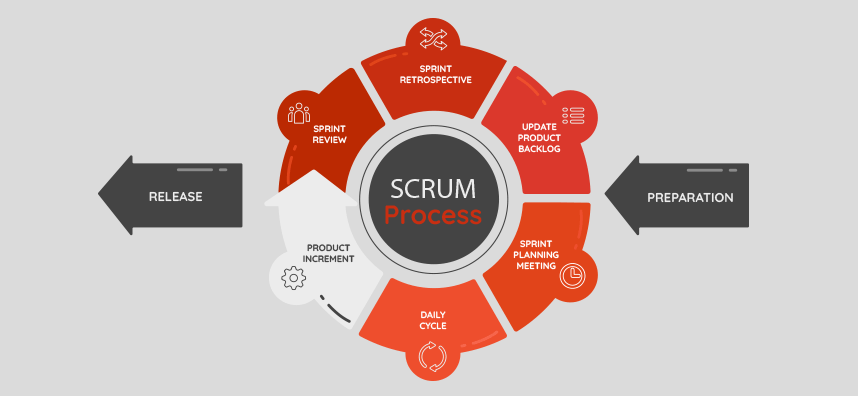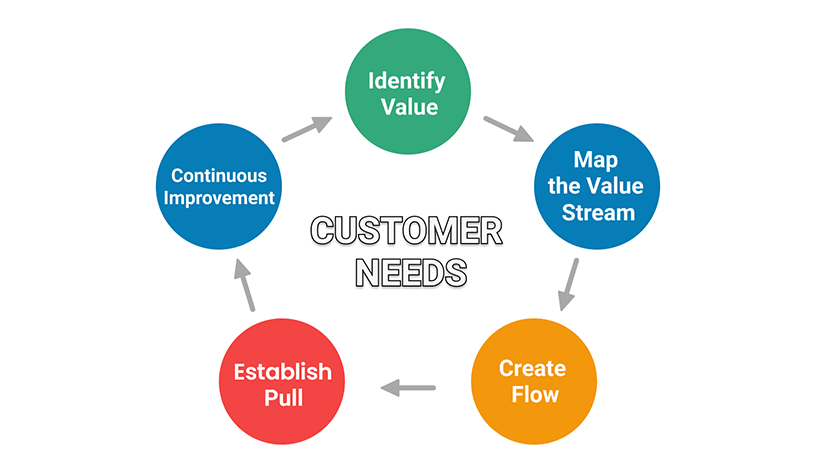Isn’t it a thrill to be promoted or assigned to lead a new project? You know you’ve achieved a real milestone when your hard work is recognized and your organization decides you’re ready to lead a team.
But then it can be a real struggle getting settled into the new position. Advancing along the leadership pipeline means you’re seeing things from a different perspective and framework.
Succeeding isn’t nearly so simple as showing up to a new office with an updated title. Most people feel like a fish out of water at the beginning. There’s a bit of scrambling, figuring out how to adjust to the new environment. Leaning back on old habits and skills doesn’t always cut it.
Advancement, rather, is like climbing a mountain. You used a certain set of equipment and tools to arrive at base camp, but in order to progress further, many of the same tools won’t do you any good. You’ll need a whole new set of tools in order to ascend any higher.
For most of us, making this advancement isn’t intuitive. Without strategy and training, you’ll find yourself falling back on the same familiar skill sets from your old position.
Excelling in a new role means being intentional with the skills you use and develop, and the skills you let go.
If you’re adjusting to a new leadership position or aspiring to grow into a leader, buckle in. We’re going to look at 18 strategies and skills necessary for managers to become leaders.

1. Be Transparent About What You Don’t Know
In addition to being exciting, a promotion or new assignment can also be stressful. The pressure to perform from day one feels immense. In highly visible situations such as the kickoff call, you want to look like you have it all together.
When you’re new to a role, however, having it all together means being honest and open about everything you don’t understand.
If you’re faced with all sorts of new things; new software, new clients, and a whole new team; don’t be shy to ask away and acquire as much information as possible. Start building strong relationships with other managers who have been with the company for some time. When you’ve developed this trust, they become valuable resources for soliciting information and council.
Remind yourself that there’s no shame in learning and asking questions. It’s the strongest position for you and your team at this point.
With an inquisitive mindset that’s ready to learn, you’ll quickly go from feeling like you’re drowning in things you don’t understand, to feeling stable and in a position to hold the reins. And once you have a good understanding of budgets, client goals, stakeholder concerns and project risks, you’re much better poised to lead the team to success.

2. Develop Listening Skills
Whether you’re working with a small, medium or large company, this soft skill stands at the tippy top of the “must have” list.
As a leader, 90% of your job is about communication. Someone who has a habit of talking over people or rambling on at meetings misses critical opportunities to listen to and hear from stakeholders and the rest of the team.
Three facets to being a good listener include mirroring, restating and asking questions. Let’s look at each of these individually.
- Mirror
This isn’t about trying to discover who’s the fairest of them all. Mirroring means providing feedback in real time, to indicate you’ve understood someone’s comment or suggestions. It includes things like nodding and facial expressions. Mirroring means that people aren’t just talking at one another, but rather talking to one another.
- Restate
Particularly with distributed teams, so much non-verbal communication is completely lost. Restating someone’s assertion as you hear it gives them the opportunity to clarify any misunderstandings and flesh out the key points they’re trying to make.
- Ask Questions
Oftentimes what people say are the icebergs that sit above the water. Asking good follow up questions allows you to receive a more complete understanding of the message another person is communicating.

3. Get a Coach or Mentor
When you’re promoted to a new position, particularly within an entirely new company, there’s so much you need to learn in order to become proficient. There’s an entirely new culture to acclimate yourself to, a new team, new projects, and new stakeholders. Plus, the role requires you to flex and develop a new set of skills and responsibilities.
Oftentimes the company onboarding process provides you with training and mentoring to bring you up to speed here. Lean heavily on these meetings, and come prepared to gain the knowledge and skills necessary for the position.
When the organization doesn’t provide sufficient training, seek out a coach or mentor on your own dime. Having a knowledgeable sounding board allows you to work through struggles and challenges before they turn into real problems.
In order to make the most of a coaching session, spend some time reflecting on your key concerns before the meeting. Afterwards, make a conscious effort to apply the takeaways and record how they worked out. This gives you something to build on in the following session.
4. Define Success in the New Role
If you’ve been promoted up the chain of command, you’re probably coming from a position where your job performance was evaluated by producing a deliverable: completing a batch of code, designing a graphic or organizing the product backlog.
However, leading has more to do with overseeing and motivating, and moving a team through a project. When you’re managing managers, the work gets done through them now. You’re not hands on, but rather working on things like coaching, advising and dictating.
This is a real shift; you’re seeing things from the other side of the table. Take some time to outline what your objectives are in the new position, and clarify these with your mentor to be sure you’re on the same page.

5. Re-Define How You Add Value
One common struggle with leading is that many of your new responsibilities seem intangible.
Whereas in your old position you may have produced a deliverable, you now add value to the organization by coaching, motivating and building rapport.
It’s much easier to measure progress when you’re, say, tasked with building a website and can just look at what percentage of the project is complete.
It’s harder to gauge work performance around jobs like “motivating” and “team building.”
Even though it’s hard to measure, it’s good to come up with indicators nonetheless.
When a job is defined by having conversations, building relationships, and getting work done through others, then the indicators that tell you you’re on the path to creating this value include things such as how is the team getting along, the quality of the deliverable, and the feedback you’re hearing from the team (both verbal and non-verbal).
6. Define What You’re Picking Up and What You’re Letting Go
Have you ever gone to the grocery store without a list? It’s so easy to fill up the cart with all sorts of things, only to arrive home and realize you can’t really make a meal out of any of it.
Not understanding all of the responsibilities in your job role is like going to the grocery store unprepared. You’ll be reaching for things from your old job, but it won’t contribute to the goal you’re trying to achieve in the new position.
Maybe in your old role you could own the creation process. And now you have to let go of the urge to jump in and do the work yourself.
A leadership role entails delegating, and then trusting the team’s ability to do the work. It also means looking at the longer view, and helping the team see cliffs and snafus before they become real problems.
A visual is helpful in arriving at clarity about the responsibilities in your new role. Write out what you did in your old role and what your responsibilities look like now.
Are you more focused on helping the team discover and mitigate risks? Or maybe you’re much more plugged into stakeholders than you ever have been.
This dashboard gives you a clear indication of where to spend your time in order to achieve the objectives of your new position.

7. Know Your Team’s Preferred Management Style
Teams and employees come in all shapes and sizes. When acclimating to a new leadership role, understanding the company culture and the individual preferences of team members goes a long way to succeeding in the role.
In a flat organization, your role may be more hands-off. In a culture that values personal development, your emphasis would be around building rapport and coaching. In an organization that emphasizes high-performance, you may assume a more dictatorial and authoritative role.
Additionally, every person has preferences about how they want to be managed. More than a third of Generation Z employees say they want to interact with the boss daily, and 84% want to receive formal training. Some employees are very resistant to change, and others benefit from coaching.
Knowing these personal preferences helps to retain a talented team. And these details aren’t always apparent just from talking to people. One way to gain empathy and insight into your team is with personality tests. A few options include 16Personalities, CliftonStrengths Assessment, and Meyers-Briggs. When done as a team exercise, where everyone shares and discusses the results, it increases knowledge across all the team members.
8. Develop Your Team
More than anything else, leadership is about enabling a team to succeed. More than looking for where you want to be in five years, growing as a leader is about asking: “How do I get someone else promoted?”
Each member of your team has practical and personal needs that they’re looking to fulfill in their professional lives. Take some time to understand these desires. Know where they’ve come from in their careers, who their mentors are, and ask candid questions about where they are headed and what you can do to get them there. This takes some one-on-one time, so be sure to work it into your schedule.
This knowledge is so valuable in identifying what kind of projects to assign someone to, and where to direct an employee’s career during his or her time with you.
When everyone on your team is aligned with their personal goals, they’ll do their best work. And people will recognize you as someone who produces and develops great talent.

9. Develop Coaching Skills
Coaching plays a central role in empowering and leading others. At its core, coaching is about providing support.
A lot of coaching focuses on professional development. To make these sessions valuable, set expectations at the beginning for the long-term objectives. When you understand an individual’s professional objectives, it’s possible to provide feedback in their work performance, and indicate gaps between whether they are now and where they want to be.
Understanding and observing your team is par for the course here. This means noticing their strengths, deficiencies, and professional and personal goals.
Maybe you have a manager who is brand new to managing, and struggles with letting go of work he knows he can do himself. Or another who is excellent at building rapport, but doesn’t always see the road bump three steps ahead in the project.
When these coaching relationships are long-term, it’s possible to follow up and celebrate milestones, which makes the process both rewarding for you and the individual.
Coaching also assists with situational project management. A key role to leading a team is bringing potential risks and snafus to everyone’s attention. Facilitating ongoing communication, and working to build cooperative relationships also assists with just-in-time coaching.
Emotional intelligence is a characteristic of a good coach. It’s about knowing when to jump in and offer advice and when to let things flow. This varies from person to person.
Coaching is a skill best developed through experience. And it’s intangible. You don’t see the results right away. But over time, the impacts are reflected in feedback, team cohesion, work performance, and the final deliverable.
10. Drive Clarity for the Team
Working on a project with a team that doesn’t have clarity is like taking a trip and not knowing who’s driving, what car you’re in, how much gas is needed and where the traffic lights are.
Only a leader can set the big picture for an organization’s objectives. You determine the outcome. The team looks to the leader for this direction. Developing a shared understanding of where the entire team is going is integral to the leadership role.
True clarity isn’t anchored around the project. If a final deliverable is the team’s focus point, it’s a sign that the team doesn’t understand where it’s really headed. The project, rather, is just the vehicle. The destination is centered around how the project adds value to either the client or the organization.
For example, if a team is building an ecommerce webpage for a bookstore, the completed webpage isn’t their objective, but rather it’s increased sales for the company.
When driving clarity, it’s good to consider people’s various learning styles. Some are kinesthetics, others visual, and others auditory. Creating content for all of these methods helps to get people onto the same page. For example, flow charts that outline job duties and ideally an in-person meeting helps to communicate clarity to the entire team.

11. Build Strong Rapport
Trust, cohesion and support are integral to fostering a capable, high-performing team. With a distributed team that includes people of various ages, personalities and cultures, and different skill sets to boot, a sense of cohesion and camaraderie certainly doesn’t just happen.
Honing you rapport skills is part and parcel to creating this team dynamic.
Rapport is more than coordinating team building activities. It’s really a part of every interaction you have with your team members. Rapport is about building connections with an individual or community. More than being friendly or getting on with another person, rapport seeks to break down barriers and enable fluid communication.
Forensic psychologists Laurence and Emily Alison, authors of Rapport: the Four Ways to Read People, have distilled the fundamental components of rapport into four areas: honesty, empathy, autonomy, and reflection (HEAR).
- Honesty
Honesty means being true to your own perspective and vision, while being open to listening to alternative perspectives. Starting statements with things like: “I know some people here don’t see it this way, but….” generates empathy for your point of view, and acknowledges there are other perspectives as well.
- EmpathyEmpathizing with another person goes beyond thinking “I know how I would feel if I were in their shoes” to really trying to understand another person’s perspective. This empathy seeks to understand what really drives another person, and can only be achieved through spending time with team members and actively listening to them.
It’s a challenge to release our own perspective and deliberately listen to others and get an idea of where they are coming from, but this is key to bridging communication gaps.
Incorporating empathy into difficult messages or bad news helps to soften the blow: “I know we’ve worked hard toward this deliverable, but based on recent client feedback we’re going to have to pivot and possibly backtrack.”
- Autonomy
A work environment with lots of rigidity and protocol may well create totally unnecessary resistance from employees. We all want to have some liberty and license as to how we go about doing things. Giving people the flexibility as to what project to work on next, or when to do certain tasks yields an obliging and cooperative team.
- ReflectionRapport develops when a person feels they’re fully understood and listened to by another.
A conversation technique of throwing back what a person has said compels people to explain themselves further. This includes statements like “So it sounds like what you’re saying” and “Tell me what you mean by….”
In sum, rapport is a learned skill, developed through experience. It’s deliberate engagement.
The coordination and cohesion within a team affects its performance even more than the combined skill set of the team. For this reason, building rapport is central to leading a high-functioning team.

12. See the Big Picture
Being a leader is about seeing the forest and not getting into the weeds. You connect dots between your group and the broader vision for the whole organization. This includes things like understanding the organization’s strategic goals and the kind of culture it’s trying to create.
Rather than seeing each department within the organization as its own fiefdom, a leader understands how everything works together and what really drives revenue for the company.
Developing a thorough understanding of the entire organization allows you to manage and lead your separate department in alignment with the company’s revenue goals, its culture and its core values.
13. Facilitate, Not Command and Control
Have you ever had a leader who took credit for something you completed, and didn’t give any recognition for the team’s efforts? Or have you worked under someone who’s simply very abrupt when coaching or counseling?
When you ascend to a leadership position, you appreciate these scenarios from a different point of view. A leader continuously struggles to find a balance between driving progress and micromanaging. And the power trip of being in charge isn’t always easy to keep in check.
However, ineffective leaders stand out pretty quickly. If you’ve developed a reputation for being a bit of a nightmare to work with, then you may get slated to lead a project but have no one sign up to work with you.
It’s often the case that a team is pretty cohesive and proficient in its roles. They may not need a lot of coaching or guidance, really. The leader’s role, then, is to identify impediments and blockers. It’s about facilitating an environment where the team has all of the tools it needs to get the project done. This entails ongoing communication to identify anything that might be holding people up, knowing what’s going well, and continually seeking feedback to keep the team aligned to its vision.
It takes some time to develop into an effective leader. It’s about understanding the differences between driving results and dictating, and leading with trust versus leading with fear. As far as the team’s psychological safety and camaraderie is concerned, the overall results between the two approaches are like night and day.
14. Notice Patterns and Learn From Mistakes
No matter how hard you try to do your best, every leader eventually encounters a “worst case scenario.” Maybe you complete a deliverable on time and under budget, but the stakeholders aren’t at all pleased with it. Or you miss a deadline due to recurring friction within the team.
Rather than get discouraged, use these opportunities to learn and develop as a leader. So much about leadership can only be learned from trial and error. When you’ve been in the same situation over and over again, you start to intuitively understand how to navigate your way through it successfully.
One way to identify areas to work on as a leader is to consistently identify where you excel and where you fall short. If your team chronically experiences friction, maybe you need to work on building rapport within the team. If the deliverables fall short of client expectations, then work on crystalizing goals and requirements at the kickoff meeting.
A steady period of solid experience shows you the areas to work on. There’s nothing like getting knocked down to help you grow as a leader. Learning to be ok with failure is key to progressing along the leadership pipeline.

15. Discover Your Superpowers
Your leadership style depends largely on who you are. This includes your personality, your skill-set and your talents. Various leadership styles have been codified, and some central methods are known as “laissez-faire,” “democratic” and “pacesetter.”
A laissez-faire leader is popular in agile frameworks, where a team is given autonomy over the project, and the leader serves to remove roadblocks and impediments.
A democratic leader values all-team contributions, and closely considers all feedback before making a decision. Every person’s vote has equal weight. A democratic leader is someone who excels at facilitating discussion.
A pacesetter is performance-driven. This leader creates an environment where the team hits seemingly unreachable bars due to high expectations and demand for top-notch performance. A pacesetter is characterized as someone who’s driven, a hard worker, competitive, and highly skilled in their given field.
Your own personal leadership style is learned through experience. Sometimes this is a chicken and egg scenario. If you’re craving leadership experience to understand your preferred method, seek out small-scale projects to get your foot in the door. You may well discover a superpower you had no idea you had.
Listening to the team and how they want to be led is also an important part of the formula. Being able to code switch your style after taking a temperature of the situation is a sign of a highly skilled leader.
16. Look for Validation Through Feedback
In one sense, a leader needs to set direction and make tough decisions, even in the face of criticism and backlash. However, this doesn’t mean he or she is unconcerned with what other people think.
Becoming a leader who empowers employees means listening closely to feedback. This can be communicated both directly and indirectly. Having systems in place for gathering feedback, particularly following the completion of a project, allows the leader to take a temperature check of the team.
Looking for this validation and learning from it is the characteristic of a transparent leader. It’s part and parcel to understanding where you’re effective as a leader, and areas to improve.

17. Cultivate a Culture of Transparency
Company culture is developed from the top down. It’s reflected more in things the leaders say than in anything written up in the company’s core values. Moving into a leadership position in a transparent culture means embodying the company’s core values.
In order to morph from a manager into a transparent and effective leader, it’s necessary to let your guard down. Be willing to eat some crow when you know you’ve dropped the ball on something. And don’t be afraid to let everyone know what your weaknesses are. People appreciate vulnerability in a leader.
When a leader is ok with looking human before others, it makes him or her more relatable. People are more likely to rally behind someone who is charismatic, but who admits that they don’t have it all together.
18. Do the Little Things
When you’re looking to advance in your career, take time to cross your i’s and dot your t’s.
Many days at your job probably feel like playing games of whack a mole. There are so many key people to stay in contact with and emails to follow up on, that it’s easy to let things fall through the cracks.
But the little things really matter. People notice when you’re too busy to show up on time for a meeting, or have a habit of saying you’ll get back to someone, and then never do.
Conversely, behaving contentiously even with small details increases your likability. It means you’re not too busy for people, and that you respect their time and perspective.
At the end of the day, we’re not elephants, so we’re bound to forget about things from time to time. Putting systems into place, such as email templates that make it quick and easy to keep up on emails, or else having a great personal assistant, really helps with creating habits around being contentious.
When people see that you’re faithful about the little things, they are more likely to trust you with the bigger things as well.
Conclusion
Everyone’s career arc is a little different. Some people organically develop into leaders. Maybe they start with small projects, and through consistently producing quality deliverables, morph into leaders over time. For others, it happens all of a sudden. They’re thrown into a much different environment, managing other managers on projects with high stakeholders.
Whatever the story, many of the challenges remain the same. It’s difficult as a leader to not fall into patterns of micromanaging, dictating and command and control. And it’s a struggle to resist falling back on old patterns, and identify how to excel in the new role.
When transitioning from manager to leader, it’s critical to remember that “what got me here won’t get me there.” Leaning in on the same sets of skills won’t allow you to thrive as a leader. It’s about developing and honing a whole new set of skills.
Many of these skills are intangible, and include coaching and driving clarity for the team. Being intentional about when to use a skill and when not to is key to succeeding as a new leader.
Ultimately, being a leader is about making a daily choice to practice skills and methods that facilitate a team to do its best. Every organization is in need of better leadership, and so by honing these skills you’re doing nothing but good for the organization and the team.














































































